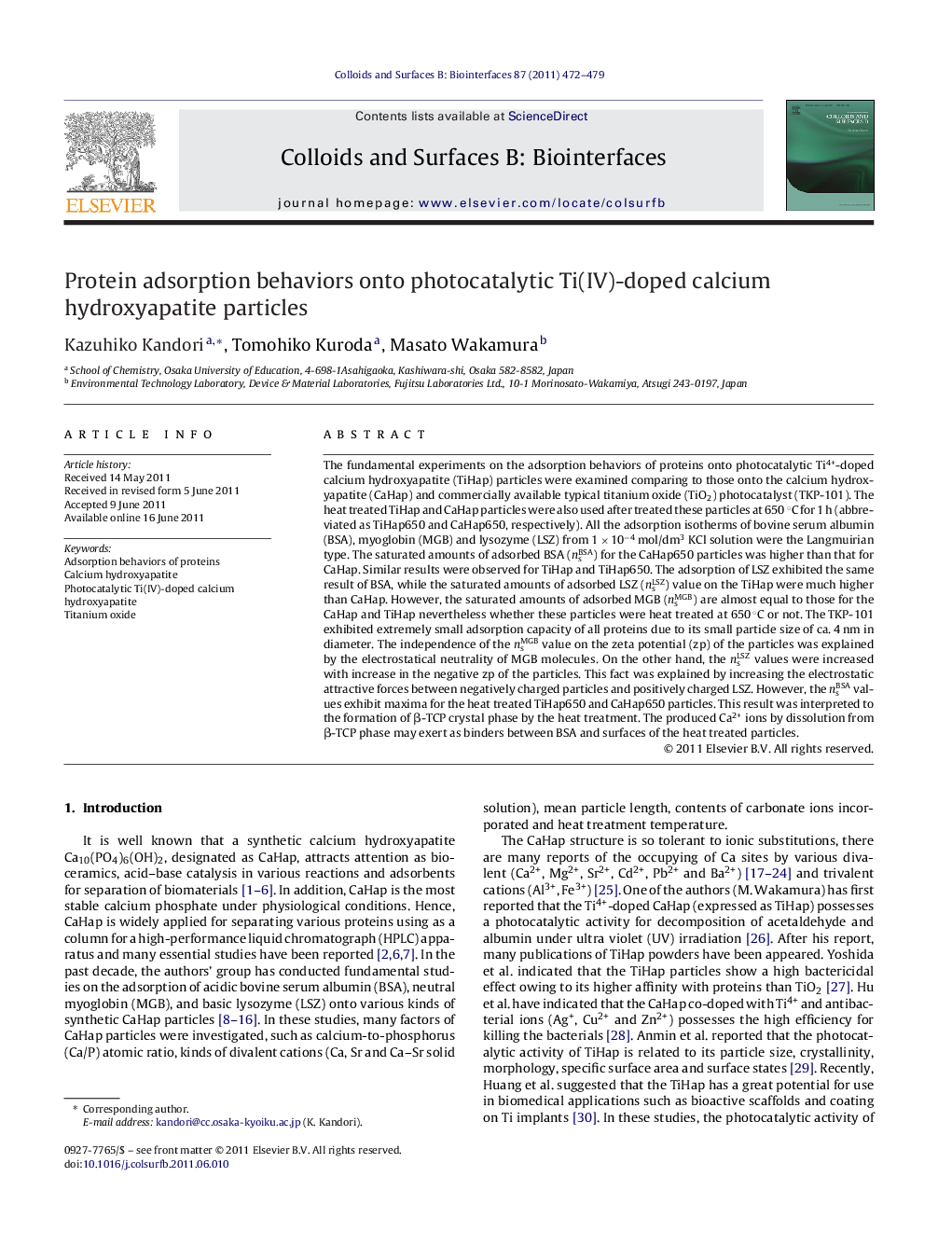| کد مقاله | کد نشریه | سال انتشار | مقاله انگلیسی | نسخه تمام متن |
|---|---|---|---|---|
| 601009 | 879929 | 2011 | 8 صفحه PDF | دانلود رایگان |

The fundamental experiments on the adsorption behaviors of proteins onto photocatalytic Ti4+-doped calcium hydroxyapatite (TiHap) particles were examined comparing to those onto the calcium hydroxyapatite (CaHap) and commercially available typical titanium oxide (TiO2) photocatalyst (TKP-101). The heat treated TiHap and CaHap particles were also used after treated these particles at 650 °C for 1 h (abbreviated as TiHap650 and CaHap650, respectively). All the adsorption isotherms of bovine serum albumin (BSA), myoglobin (MGB) and lysozyme (LSZ) from 1 × 10−4 mol/dm3 KCl solution were the Langmuirian type. The saturated amounts of adsorbed BSA (nsBSA) for the CaHap650 particles was higher than that for CaHap. Similar results were observed for TiHap and TiHap650. The adsorption of LSZ exhibited the same result of BSA, while the saturated amounts of adsorbed LSZ (nsLSZ) value on the TiHap were much higher than CaHap. However, the saturated amounts of adsorbed MGB (nsMGB) are almost equal to those for the CaHap and TiHap nevertheless whether these particles were heat treated at 650 °C or not. The TKP-101 exhibited extremely small adsorption capacity of all proteins due to its small particle size of ca. 4 nm in diameter. The independence of the nsMGB value on the zeta potential (zp) of the particles was explained by the electrostatical neutrality of MGB molecules. On the other hand, the nsLSZ values were increased with increase in the negative zp of the particles. This fact was explained by increasing the electrostatic attractive forces between negatively charged particles and positively charged LSZ. However, the nsBSA values exhibit maxima for the heat treated TiHap650 and CaHap650 particles. This result was interpreted to the formation of β-TCP crystal phase by the heat treatment. The produced Ca2+ ions by dissolution from β-TCP phase may exert as binders between BSA and surfaces of the heat treated particles.
Figure optionsDownload as PowerPoint slideHighlights
• We examined protein adsorption onto photocatalytic Ti4+-doped apatite particles.
• Photocatalytic apatite particles possess a high adsorption capability for proteins.
• Heat treatment induces a higher adsorption capability for proteins.
• Commercially available photocatalytic TiO2 particles have low protein adsorption.
Journal: Colloids and Surfaces B: Biointerfaces - Volume 87, Issue 2, 15 October 2011, Pages 472–479